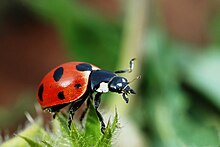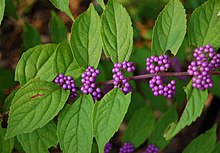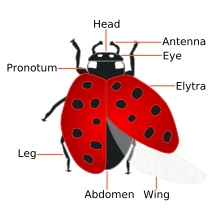There comes a time in the summer when the lazy, hazy days are over. Always around the first of August, the animals, insects and plants begin to change their attitude toward "Get Ready for Winter". The squirrels are really into the pine cones and hickory nuts, then running up to the nest to store everything! The insects are laying eggs as the plants are going to seed. The natural world prepares for the cold days ahead. Though we have many hot days to go, it is accompanied by the promise of Fall Relief just around the corner. Time to prepare Your Nest also! Around here, we are preparing for the arrival of the Hummingbirds. A few are here early. If You are on the Texas migration route, get your feeders out! Your photostudy is from a walk around the July ground. Enjoy!
New Buds Popping Open Like Popcorn (Near East Crape Myrtle)
This is the summer canopy and why I can not see the sky! But I am cool in the Shade! Plant Trees!
Checking on the progress of the Figs! Looking Good, but still Green! (Celeste Fig Tree)
From the Google Index:
Common fig - Wikipedia, the free encyclopedia
en.wikipedia.org/wiki/Common_fig
Next, we have mating ladybugs:
Ladybugs
https://en.wikipedia.org/wiki/Coccinellidae
Coccinellidae
From Wikipedia, the free encyclopedia
The Coccinellidae are a family of small insects, ranging from 1 to 10 mm (0.04 to 0.4 inches). They are commonly yellow, orange, or scarlet with small black spots on their wing covers, with black legs, heads and antennae. Such colour patterns vary greatly, however; for example, a minority of species, such as Vibidia duodecimguttata, a twelve-spotted species, have whitish spots on a brown background. Coccinellids are found worldwide, with over 5,000 species described,[3] more than 450 native to North America alone.
Coccinellidae are known colloquially as ladybirds (in Britain, Ireland and the Commonwealth), ladybugs (originating in North America) or lady cows, among other names.[4] When they need to use a common name, entomologists widely prefer the names ladybird beetles or lady beetles[5] as these insects are not true bugs.
The Coccinellidae are generally considered useful insects, because many species feed on aphids or scale insects, which are pests in gardens, agricultural fields, orchards, and similar places. Within the colonies of such plant-eating pests, they will lay hundreds of eggs, and when these hatch the larvae will commence feeding immediately.[6] However, some species do have unwelcome effects. Among these, the most prominent are the subfamily Epilachninae, which are plant eaters. Usually, Epilachninae are only mild agricultural pests, eating the leaves of grain, potatoes, beans, and various other crops, but their numbers can increase explosively in years when their natural enemies are few, such as parasitoid wasps that attack their eggs. When that happens, they can do major crop damage. They occur in practically all the major crop-producing regions of temperate and tropical countries.
| Ladybird | |
|---|---|
 | |
| Coccinella magnifica | |
| Scientific classification | |
| Kingdom: | Animalia |
| Phylum: | Arthropoda |
| Class: | Insecta |
| Order: | Coleoptera |
| Suborder: | Polyphaga |
| Superfamily: | Cucujoidea |
| Family: | Coccinellidae Latreille, 1807 [1] |
Physical appearance[edit|edit source]
Most coccinellids have oval, dome-shaped bodies with six short legs. Depending on the species, they can have spots, stripes, or no markings at all. Seven-spotted coccinellids are red or orange with three spots on each side and one in the middle; they have a black head with white patches on each side.
As well as the usual yellow and scarlet colorings, many coccinellid species are mostly, or entirely, black, grey, or brown, and may be difficult for non-entomologists to recognise as coccinellids at all. Conversely, non-entomologists might easily mistake many other small beetles for coccinellids. For example, the tortoise beetles, like the ladybird beetles, look similar because they are shaped so that they can cling to a flat surface so closely that ants and many other enemies cannot grip them.
Non-entomologists are prone to misidentify a wide variety of beetle species in other families as "ladybirds", i.e. coccinellids. Beetles are particularly prone to such misidentification if they are spotted in red, orange or yellow and black. Examples include the much larger scarabaeid grapevine beetles and spotted species of theChrysomelidae, Melyridae and others. Conversely, laymen may fail to identify unmarked species of Coccinellidae as "ladybirds". Other beetles that have a defensive hemispherical shape, like that of the Coccinellidae, (for example the Cassidinae), also are often taken for ladybirds.
A common myth, totally unfounded, is that the number of spots on the insect's back indicates its age.[11][12] In fact, the number, shape, and placement of the spots all are determined by the species of the beetle, and are fixed by the time it emerges from its pupa. The same applies to the colour, except it may take some days for the colour of the adult beetle to mature and stabilise. Generally, the mature colour tends to be fuller and darker than the colour of the callow.
http://en.wikipedia.org/wiki/Callicarpa
Callicarpa
From Wikipedia, the free encyclopedia
| Callicarpa | |
|---|---|
 | |
| Callicarpa dichotoma 'Early Amethyst' (Purple Beautyberry) | |
| Scientific classification | |
| Kingdom: | Plantae |
| (unranked): | Angiosperms |
| (unranked): | Eudicots |
| (unranked): | Asterids |
| Order: | Lamiales |
| Family: | Lamiaceae |
| Genus: | Callicarpa L. |
Growth[edit|edit source]
The temperate species are deciduous, the tropical species evergreen. The leaves are simple, opposite, and 5–25 cm long. The flowers are in clusters, white to pinkish. The fruit is a berry, 2–5 mm diameter and pink to red-purple with a highly distinctive metallic lustre, are very conspicuous in clusters on the bare branches after the leaves fall. The berries last well into the winter or dry season and are an important survival food for birds and other animals, though they will not eat them until other sources are depleted. The berries are highly astringent but are made into wine and jelly. Callicarpa species are used as food plants by the larvae of some Lepidoptera species including Endoclita malabaricus and Endoclita undulifer.
Insect repellent[edit]
Wine uses[edit]
It has also been used to produce wine.[citation needed]
Chemical constituents[edit]
Four chemicals isolated from Callicarpa have been shown to act as insect repellents: borneol,[6] callicarpenal, intermedeol, and spathulenol.[7] The use of callicarpenal has been patented by the United States Department of Agriculture Agriculture Research Service as a mosquito repellent.[
Pears are still hard!
Soon there will be pear pie and pear butter! Yum!

Basil
Dragon fly
Dragonfly - Wikipedia, the free encyclopedia
en.wikipedia.org/wiki/Dragonfly
...this is brendasue signing off from Rainbow Creek. See You next time!
O+O


















































No comments:
Post a Comment
Hi Everybody! Please say hello and follow so I know you are here! Due to the inconsideration of people trying to put commercials on my blog comment area, I have restricted use of anonymous posts. Sorry that some hurt all.
My public email is katescabin@gmail.com No spammers or trolls